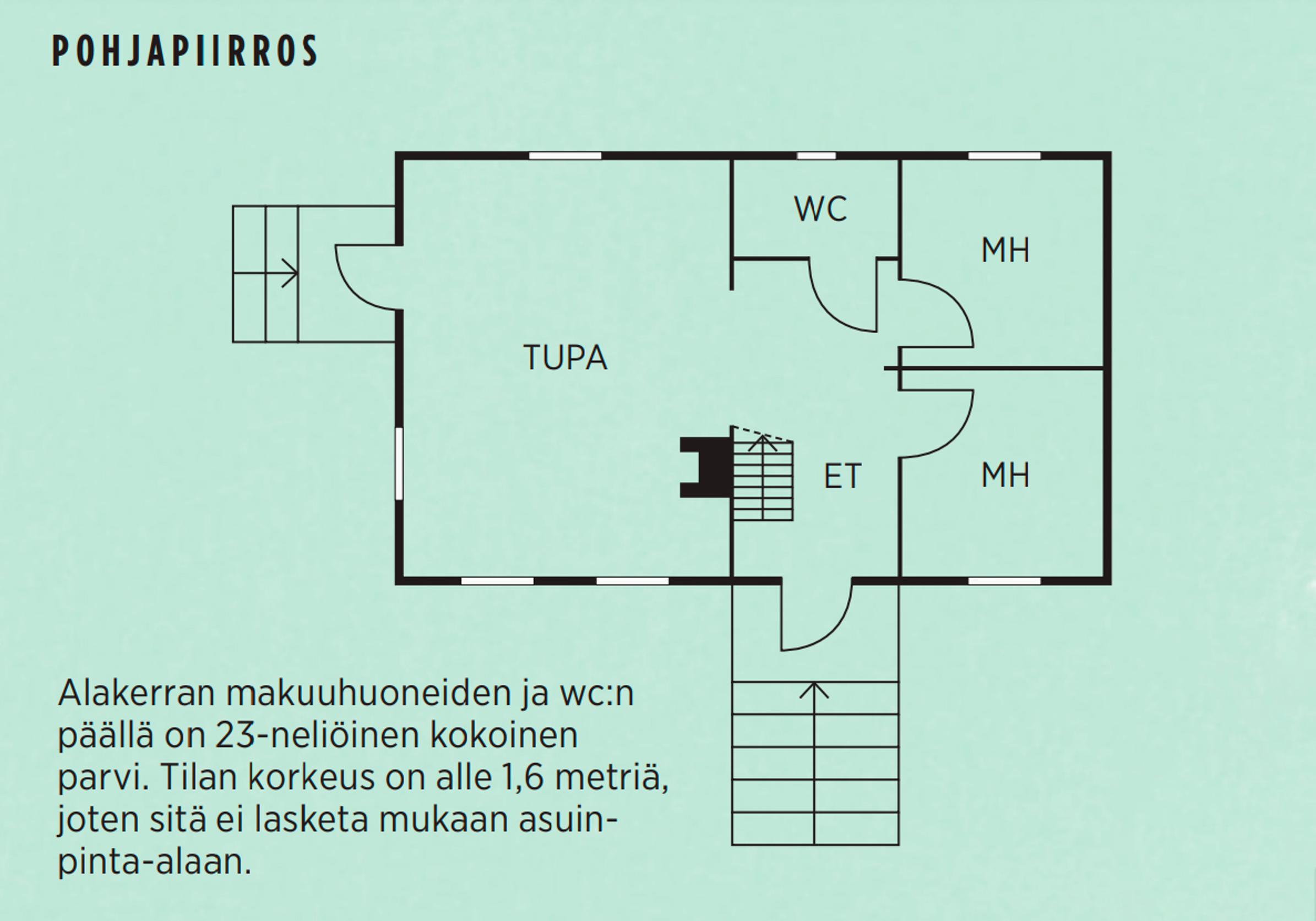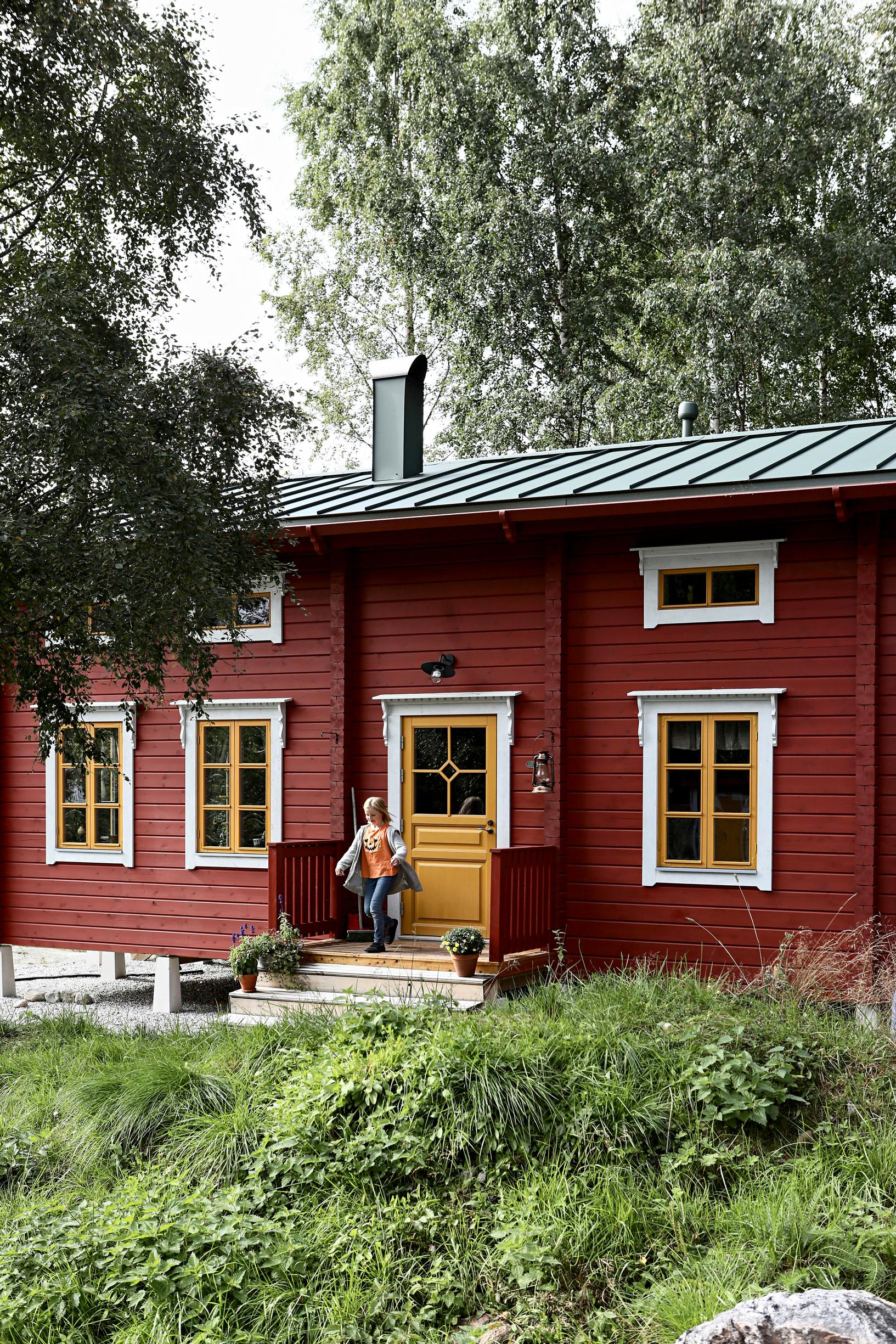
Family builds a 50-square-meter house with bore water and a pulsator machine for laundry
The Rajahalme family used to live in a 100-square-meter detached house, but they yearned for a simpler life instead of modern conveniences. Their new log home, built on an old hemp field, is heated with wood and gets its water from its own well.
Jessica, Theo and Loui Rajahalme are sitting around the trestle table. The four-year-old Loui celebrates triumphantly. Winning the card game makes him smile from ear to ear. The sound of the front door signals that the family’s school-age child is home. Elsa, 8, takes her bag into her room and joins the others at the long table in the main room.
We are on the coast of the Gulf of Bothnia, in the archipelago town Luoto, at the Rajahalme family’s log house. Through the six-pane window, you can see old apple trees, a well, and a glimpse of a small 19th-century log house—the former main building of the Hamplandsgärda estate. An outbuilding separates the sheltered yard from the road, and at the far end of the yard stands a bunny hutch clad in chicken wire.
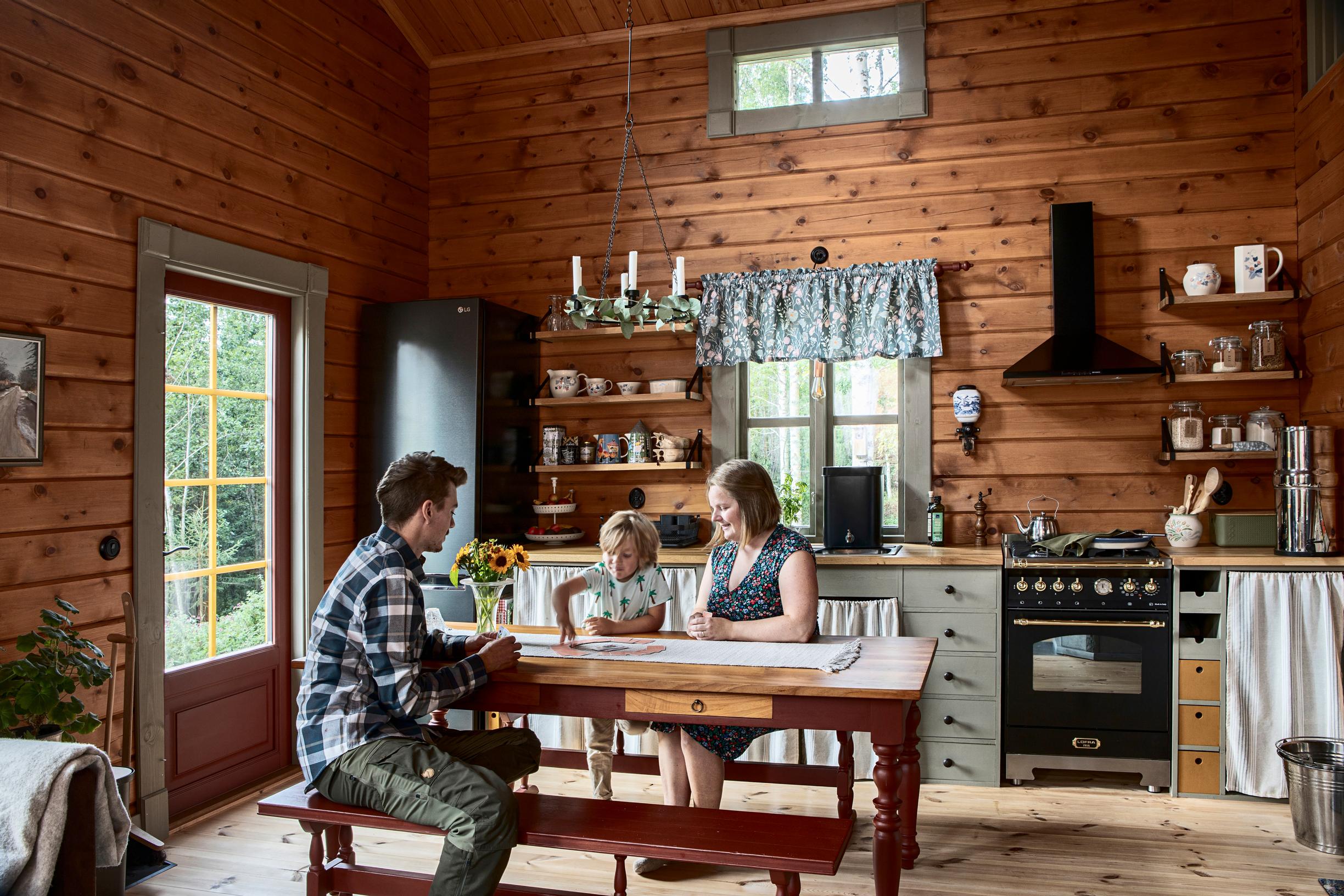
The Rajahalme family’s new home is a solid-log house completed in January 2022.
– The estate is called Hamplandsgärdan. Apparently, hemp used to be grown here, Theo explains.
Growing hemp was nothing unusual in the 1800s. It was cultivated for its excellent fiber, which was long and strong and used for ropes, woven fabrics, and even caulking boats.
Only a hundred years ago, living in Finland required self-sufficiency. The idea of a simpler, more self-reliant life prompted Jessica and Theo to swap modern comforts for bore water and chopping their own firewood.
– We discovered we felt better at Jessica’s parents’ villa, which has no modern amenities. We started wondering why we couldn’t simply live the same way, Theo reflects.
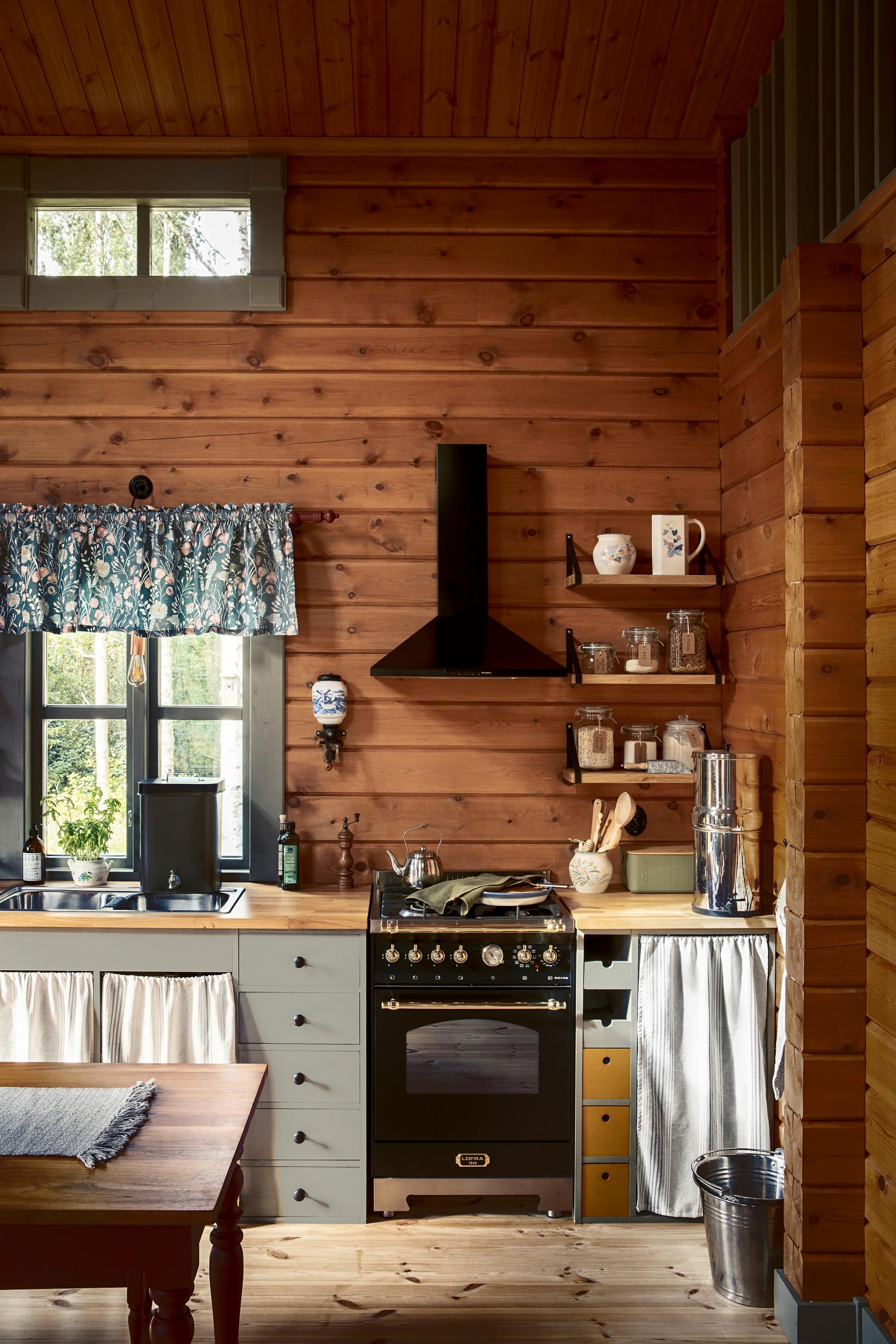
The main room ceiling is over four meters at its highest.
A mere three years ago, the family lived in a spacious, 100-square-meter detached house from the 2010s. Getting hot water was as simple as turning on the tap, and it was always T-shirt weather inside. Jessica and Theo began to ponder the ease of modern life.
– I started feeling that I didn’t want to live like that. At home, you could do nothing yourself except mow the lawn or empty the dishwasher, Theo says.
The couple were also bothered by how dependent the family was on electricity—cooking was impossible without it.
– And the house couldn’t provide fresh air or hot water during a power outage, Theo adds.
They were also concerned about the possibility—or impossibility—of repairing the construction and interior materials of a modern house.
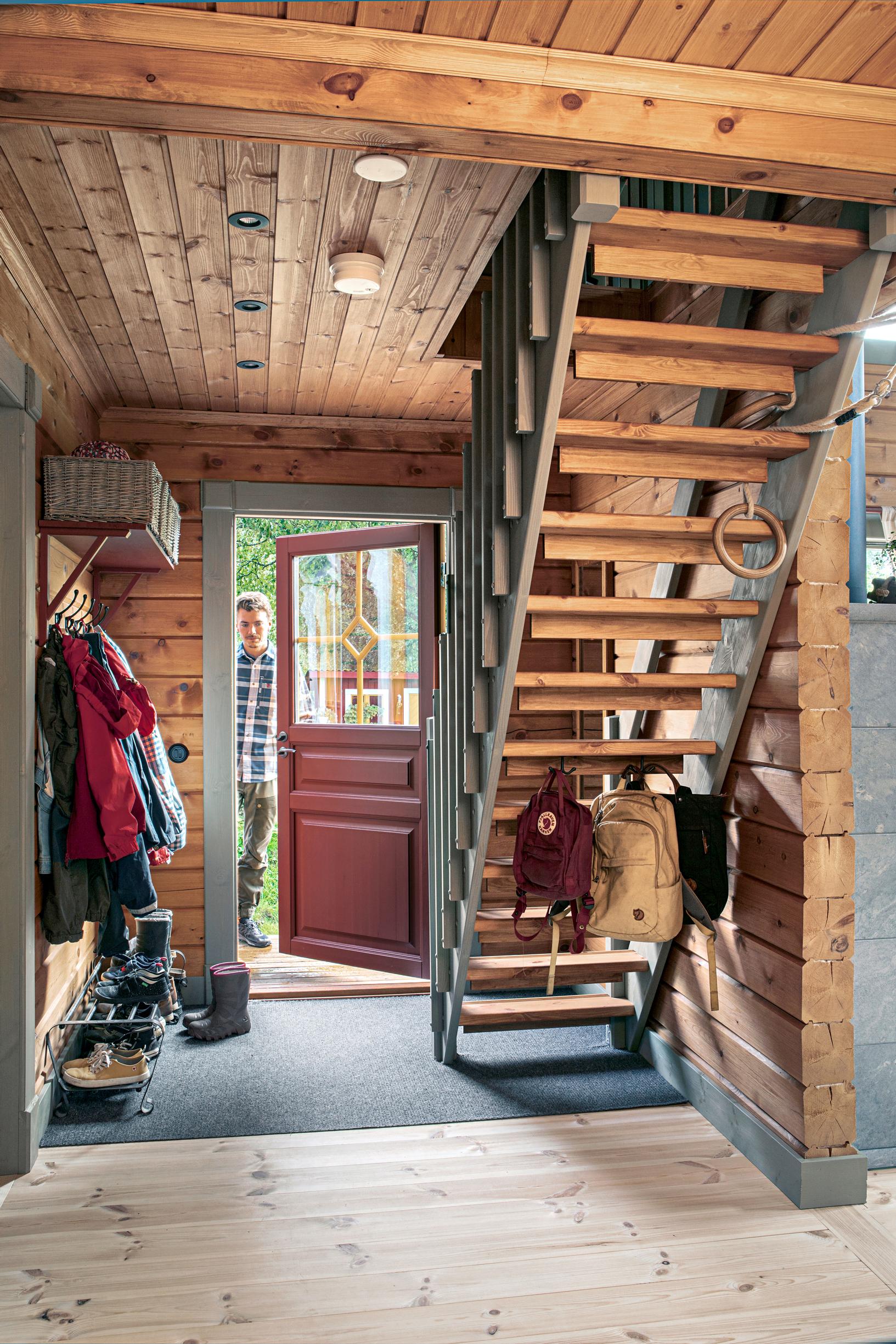
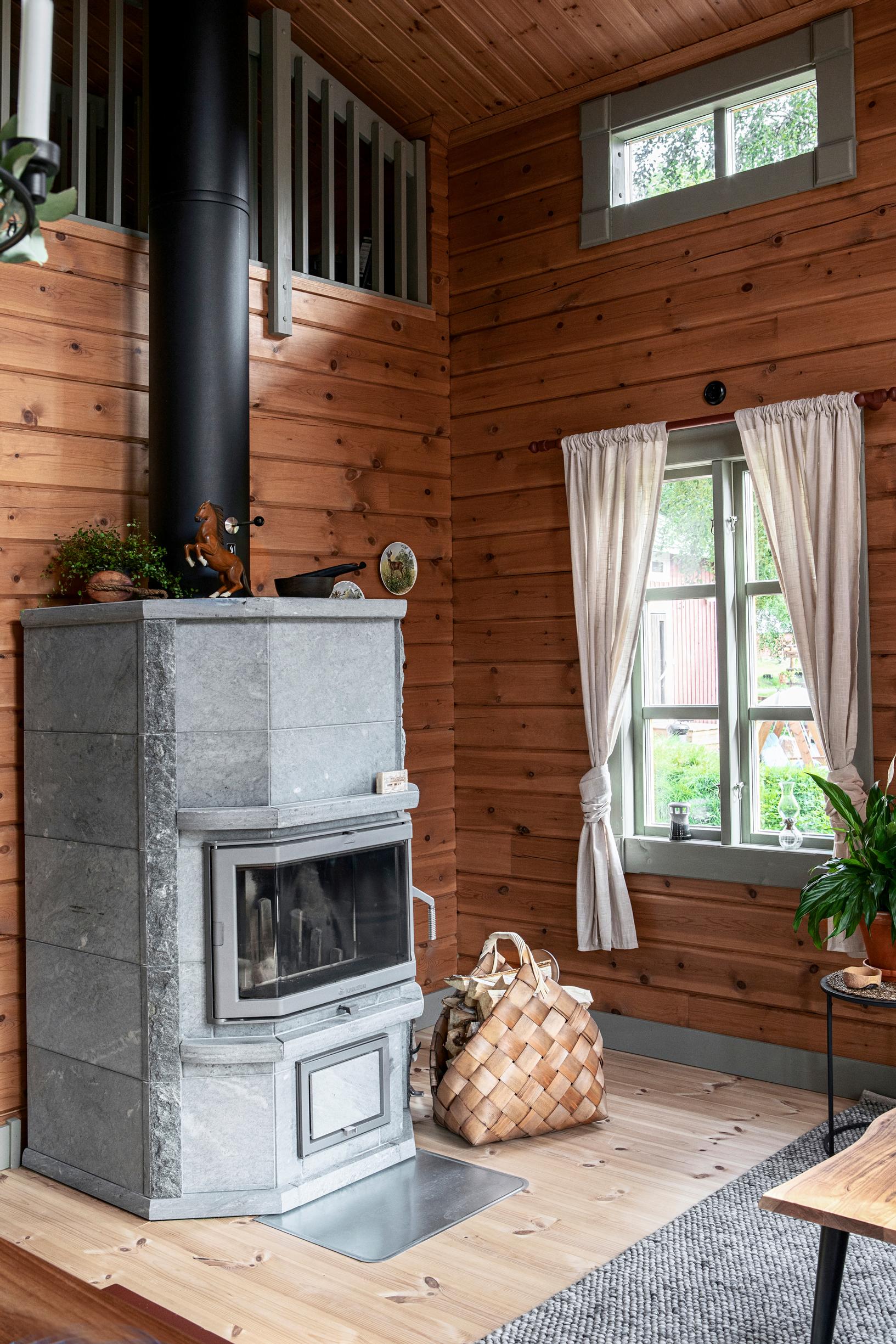
“Our two-month electricity bill is about 50 euros.”
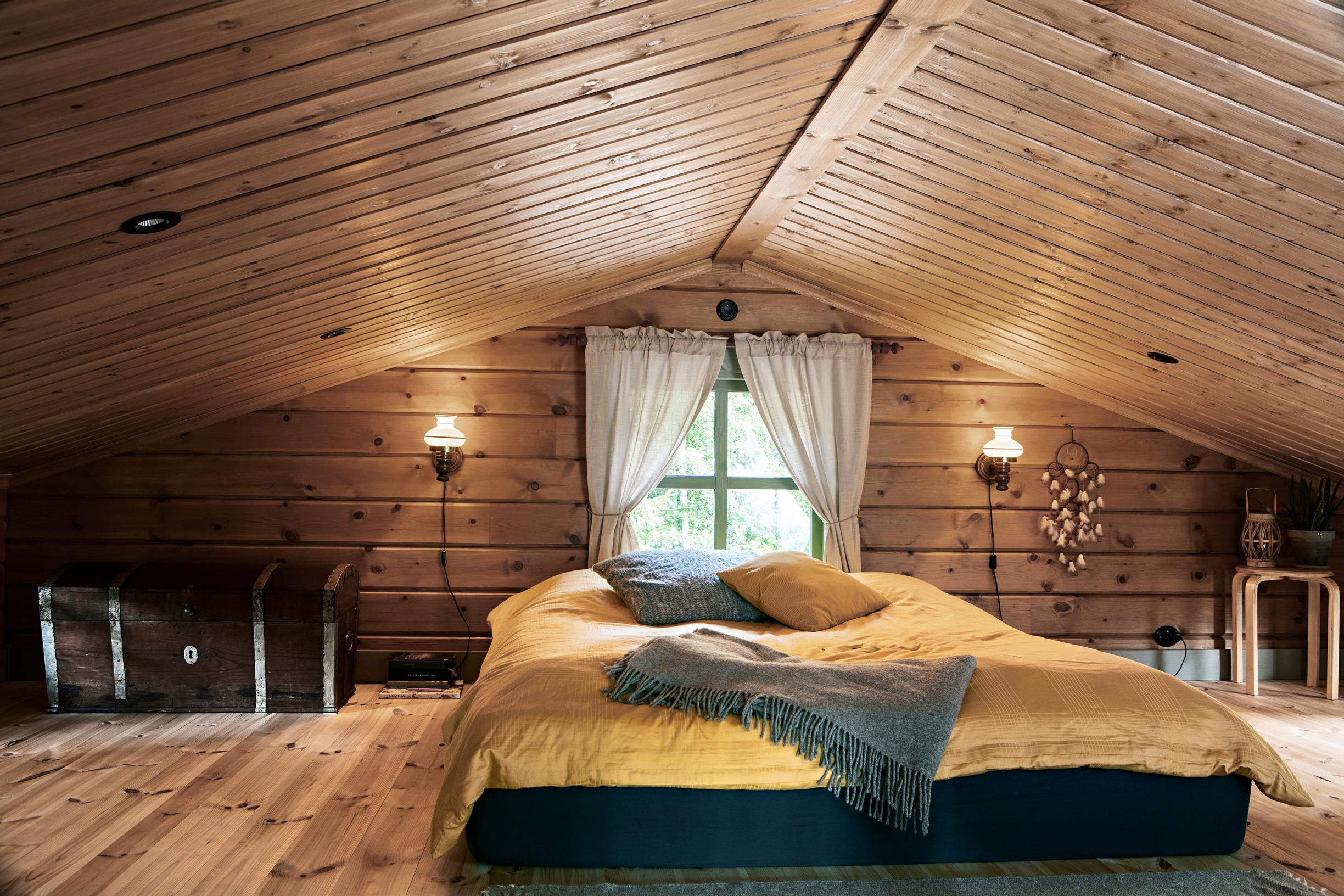
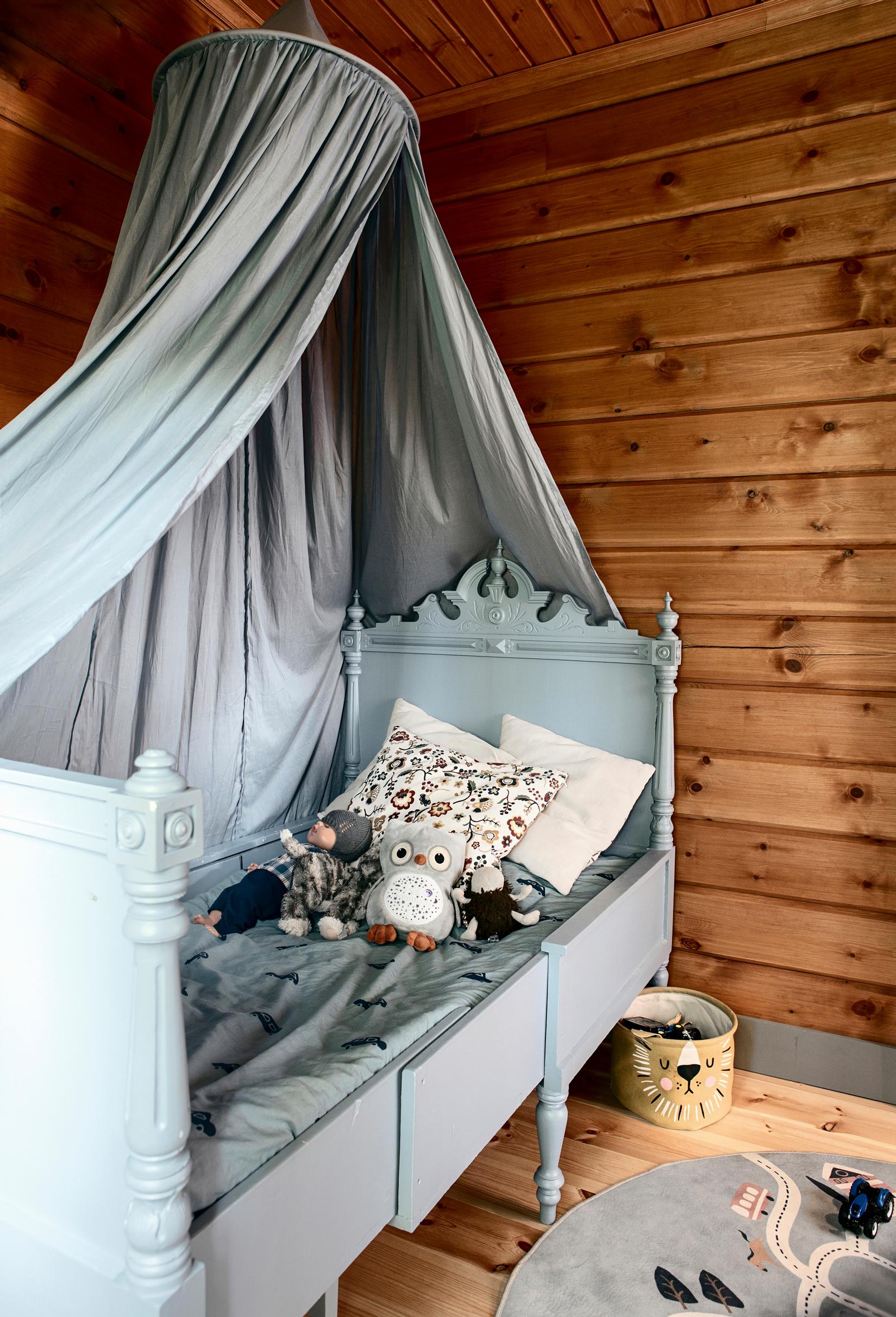
Their dream of almost self-sufficient living in a log house brought the family close to Jessica’s childhood surroundings.
– Initially, we thought about restoring the 19th-century log house that was on the property, but it would’ve needed extensive repairs. Building a new one was simpler, Theo says.
However, the old house served as the family's home during construction, which took a year and a half. The new house was designed to fit well alongside the old one.
Their dream house shrank considerably during planning.
– We debated whether to build a 50- or 70-square-meter house, as the building regulations and U-values for each were different, Theo explains.
The villa-style home the family wanted could be built as a 50-square-meter house, which meant it wasn’t subject, for instance, to building regulations regarding energy efficiency.
– We wanted to build a log house with a raised foundation and natural ventilation.
They didn’t want to add extra framing or insulation to cover the logs. The Luoto building inspection department gave tips on improving the house’s U-values, or thermal transmittance. They put 50 centimeters of Ekovilla thermal insulation in the attic and 30 centimeters beneath the floor.
– Those insulation layers compensated well for the thinner log walls, Theo notes.
The house now also has custom wooden-framed insulating-glass windows and a front door that neatly fit the 14.5-centimeter-thick log wall.
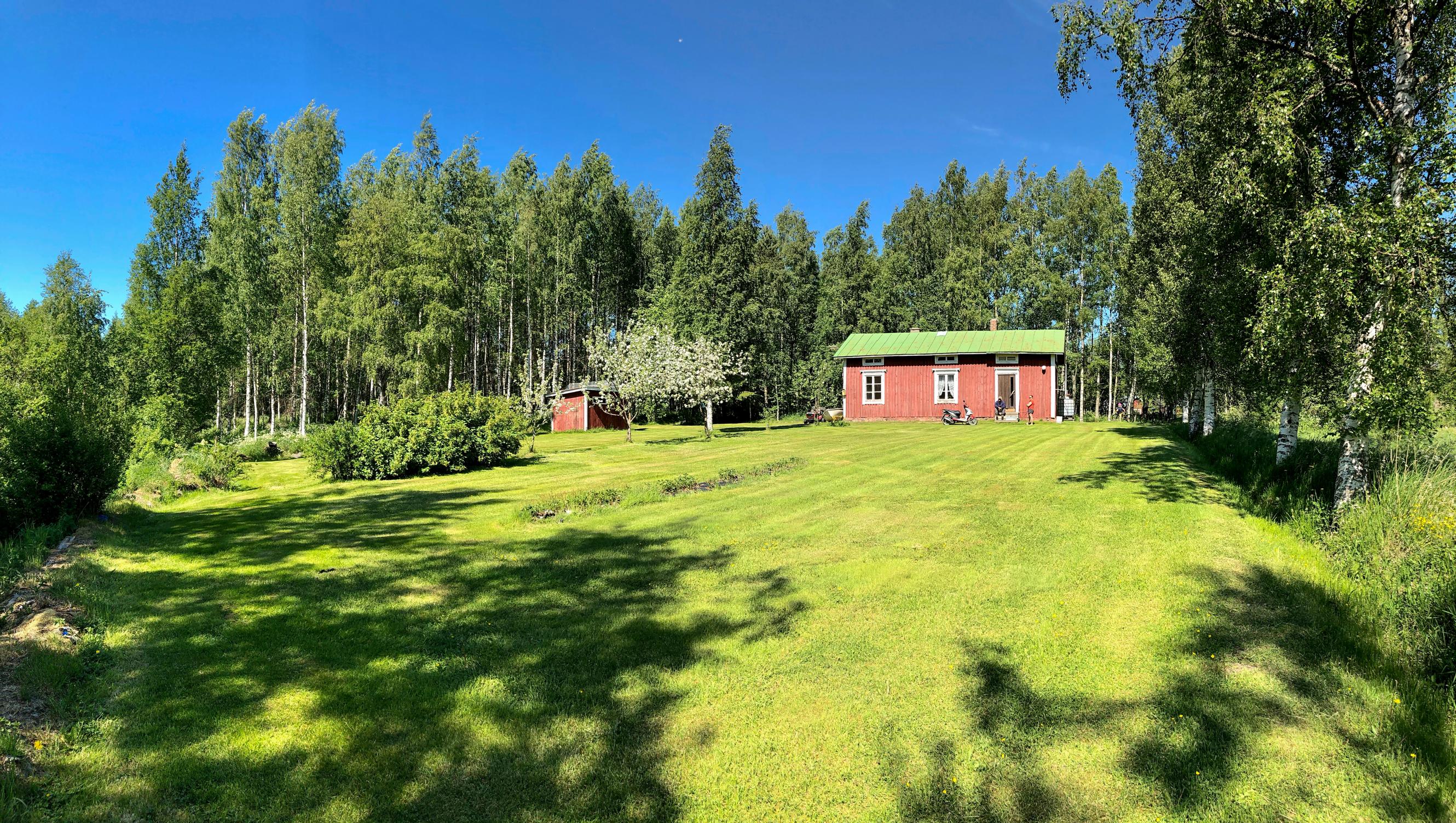
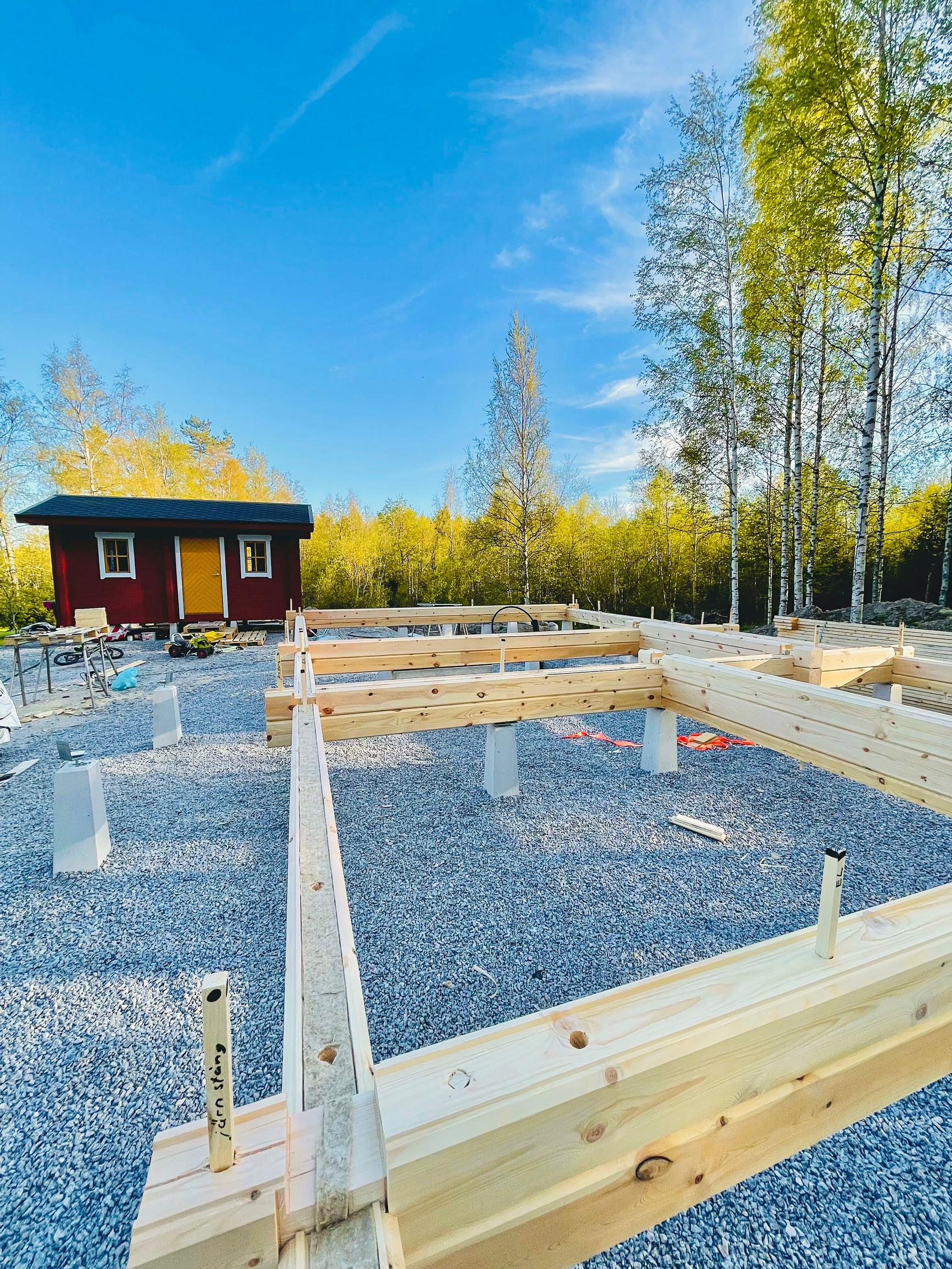
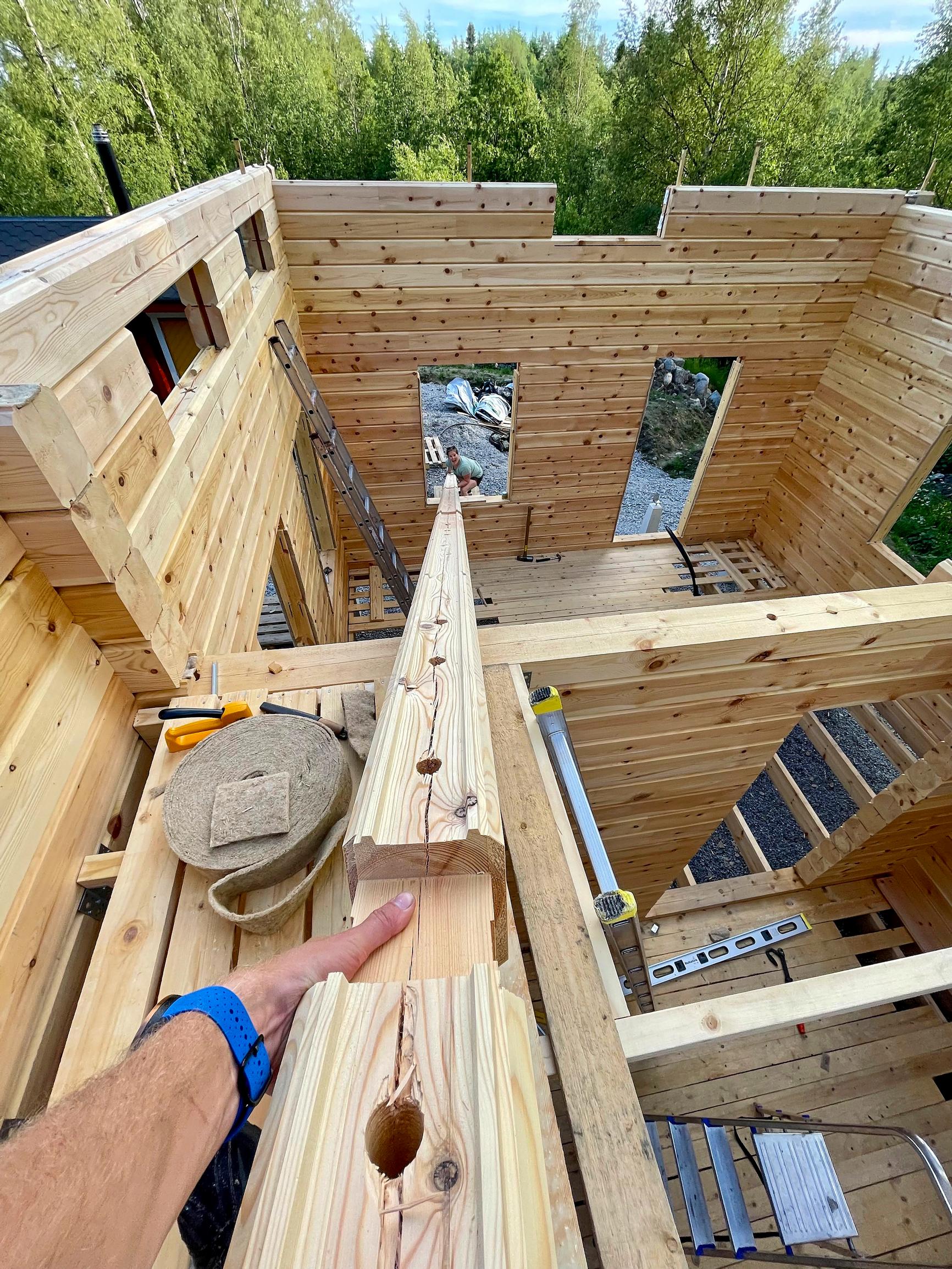
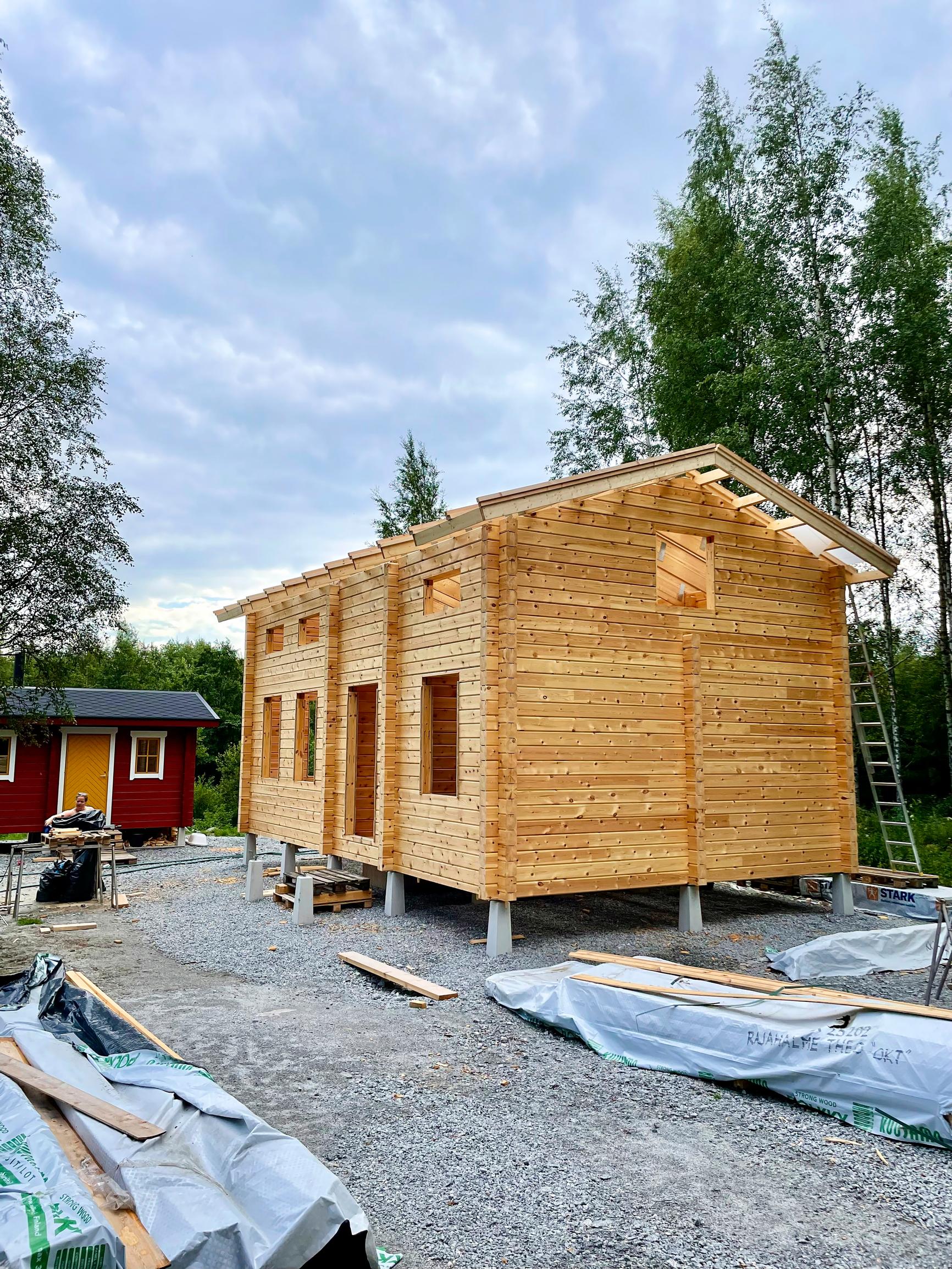
Construction began in spring 2021, once the foundations for the house and sauna were completed. The first new structure they put up was a 15-square-meter backyard sauna.
– Putting it together was excellent practice in log construction, Theo says.
By June, they were already enjoying the sauna, once a new well had been drilled and gray water wells installed for the off-grid property.
– We treat our washing water on-site. We use a separating, composting dry toilet, and its end product is eventually used to enrich the soil.
The family specifically chose not to have running water or a hot water heater inside.
– Bore water is part of the villa-like lifestyle. A hot water heater is costly to run and dependent on electricity, Theo explains.
There are several ways to get hot water in the house. In summer, water is warmed up outside with a solar heater. Otherwise, it’s heated in the water tank of the wood-fired sauna stove or in an 80-liter Kota cauldron.
– Hot water that is left over after washing up is used the next day for dishes and laundry, whenever we run the pulsator washing machine, Jessica says.
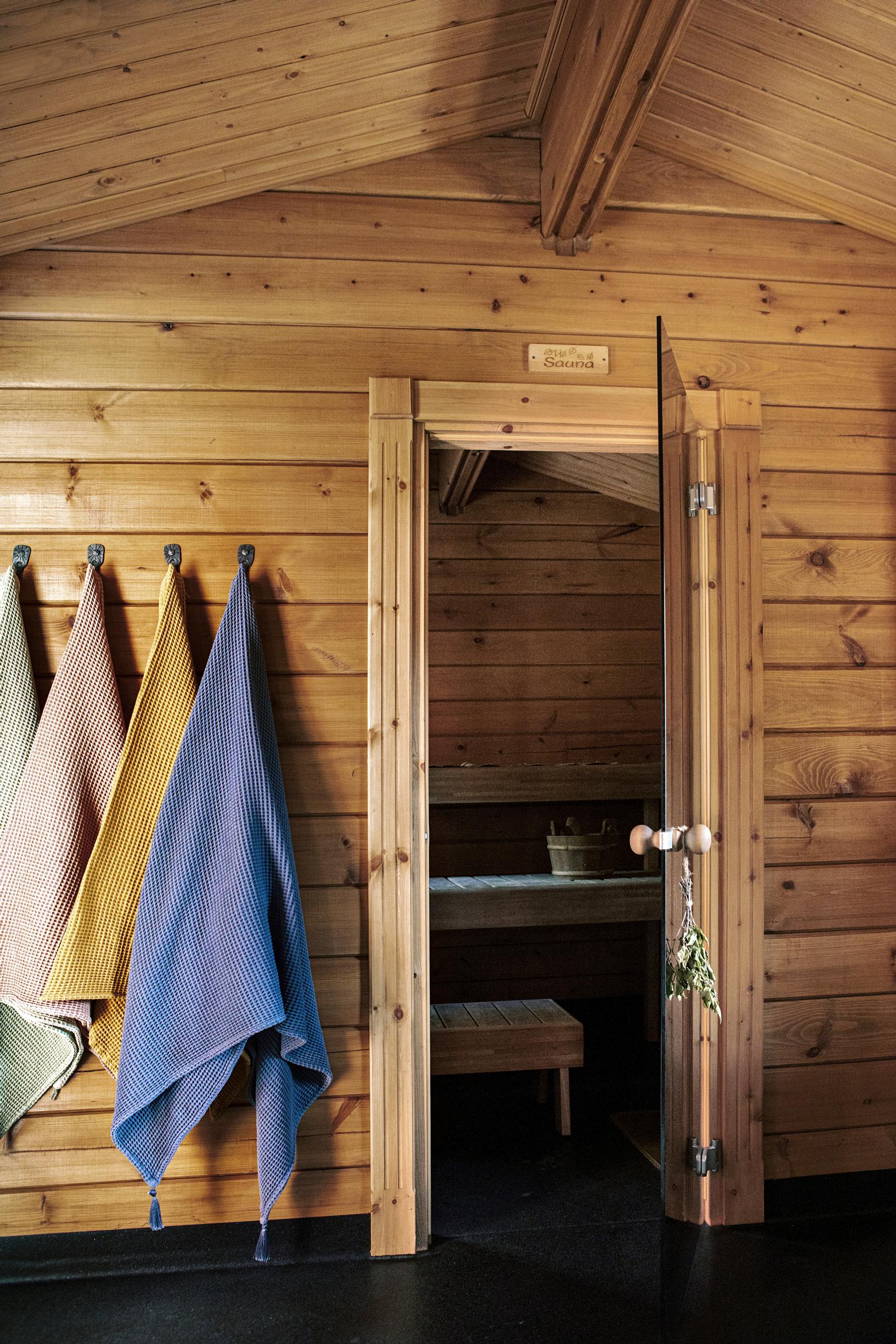
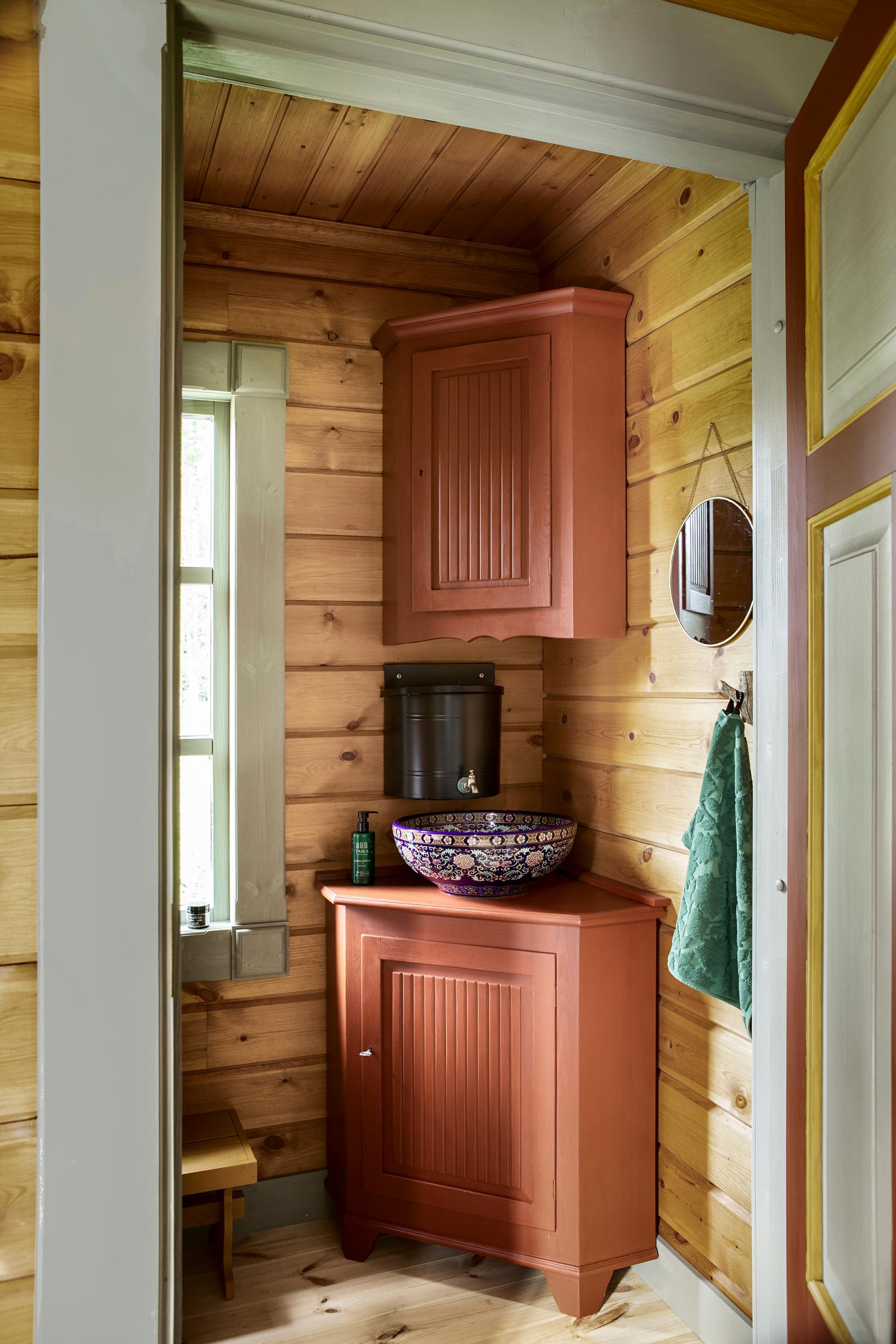
Jessica and Theo built nearly the entire house themselves.
– I’m trained as a builder, and Theo is a carpenter. We wanted to see how far we could go on our own, Jessica says.
– The excellent drawings by Kuusamo Hirsitalot helped us a lot, Theo adds.
The toughest part was lifting the logs into position since some were 10 meters long.
– We managed most ourselves, but we had to call in a crane for the header log, Theo recalls.
They’d hoped to settle into the new house by Christmas, but the final inspection ended up happening in January.
– We’re pleased with our new house and lifestyle. Our electricity bill is about 50 euros every two months, Theo says.
Jessica brings out a book by Swedish lifestyle influencer Ernst Kirchsteiger and reads a quote: “Why choose the most logical path when there are so many more intriguing ones?”
– That sentiment sums up both of us perfectly.
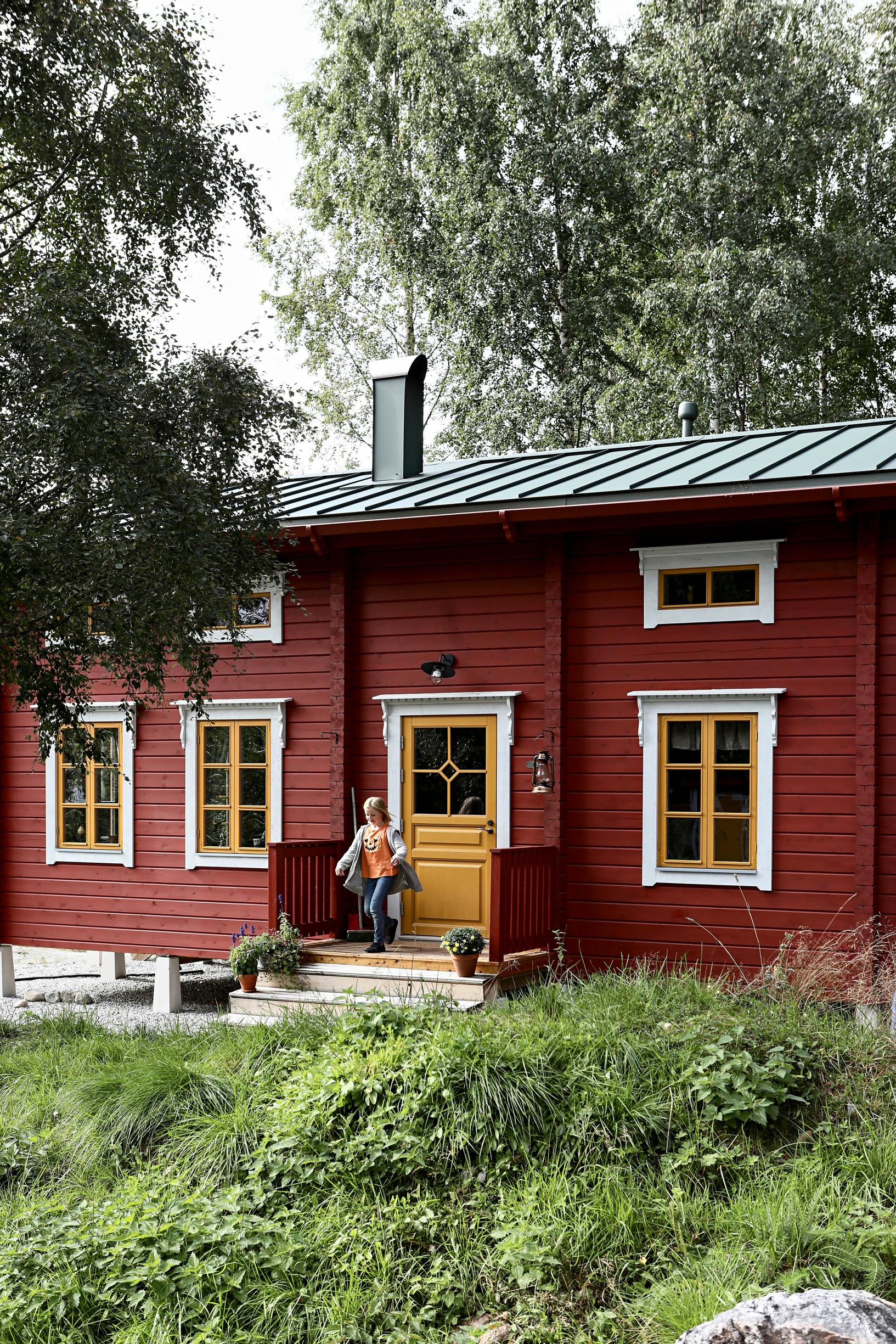
Construction budget
- Delivery of the log package for the house, including the roof and interior ceiling panels: 43,000 euros
- Doors and windows: 11,600 euros
- Sauna construction: 13,000 euros
- Heating (fireplace, chimney, radiators): 11,000 euros
- Flooring: 2,300 euros
- Wastewater wells, toilet, composter: 3,500 euros
- Electrical work: 9,000 euros
- Kitchen (cabinets, sink, appliances): 3,000 euros
- Foundations (excavation and pillars): 25,000 euros
- Drilled well and pump: 4,400 euros
- Building permits: 3,000 euros
- Plot: 33,000 euros
Total 162,000 euros
